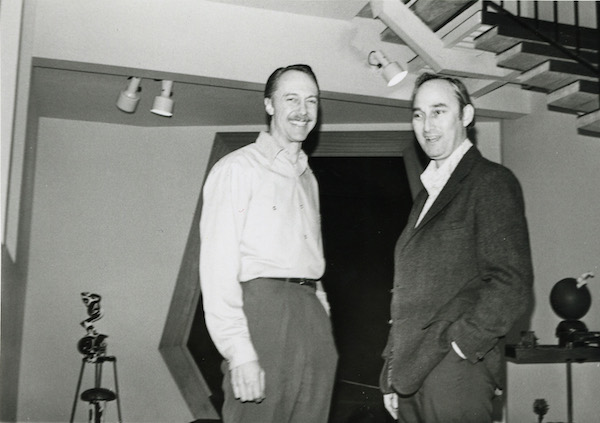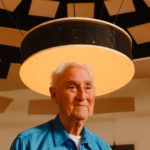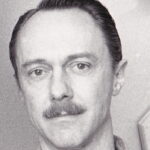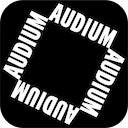
AUDIUM’S CO-CREATORS: BIOGRAPHIES
STAN SHAFF

Composer
From his early career in the 1950s as a trumpet player, composer and teacher, Stan Shaff gravitated towards stretching boundaries and shaping new forms. His friendship and collaboration with painter and sculptor Seymour Locks expanded his grounding in the arts. His high school band students performed improvisational light-sound programs, including one at the San Francisco Museum of Modern Art; he explored the nature of sound in relation to movement with Anna Halprin’s Dancers Workshop; curious about sound bereft of traditional tools and structure, he turned to tape composition, working and performing with composers involved with the Tape Music Center. By the late 1950s, Shaff’s work with audio tape led to the need to externally realize sound in the way he conceived of it: as an energy in space. In 1958 Shaff met fellow musician and teacher Douglas McEachern, whose background in electronics enabled him to develop original equipment systems for live, spatial performances. From the first public presentation of these ideas in 1960 through succeeding decades of work with the co-creation and development of AUDIUM – constructed specifically for choreographing sound in space – Shaff has sought to explore and expand the language of space in music composition and performance. (Please see “History – Overview”)
Education:
San Francisco State College, BA, Music and Education, 1950 San Francisco State College, MA, Music, 1952
Professional Music Background:
Professional Trumpet Player 1946-1966 Instrumental work in the San Francisco Bay Area, including extensive casual work in local big bands and combos; substitute musician for the San Francisco Ballet and San Francisco Opera orchestras; Golden Gate Park Band member; performer at the San Francisco Tape Music Center with Terry Riley, Ramon Sender, Warner Jepson, Morton Subotnick, and Pauline Oliveros in works such as John Cage’s Atlas Eclipticalis(1963) and the first performance of Terry Riley’s In C(1964). Composer and co-creator of AUDIUM, 1958 to present.
Teaching:
San Francisco Unified School District, Music Teacher, 1952-1963 Merritt College (Oakland, Ca.), Prof. of Arts & Humanities, 1963-1970 College of Alameda (Alameda, Ca.) Prof.of Arts & Humanities, 1970-1984
Academic Journals:
MUSIC JOURNAL, January 1977, Stan Shaff, AUDIUM: Sound-Sculptured Space
COMPUTER MUSIC JOURNAL, MIT PRESS, Gareth Loy, Vol. 9, Number 2, 1985, “About AUDIUM A Conversation with Stanley Shaff” (COMPUTER MUSIC JOURNAL Website access through pin # ; see Audium website reprint on Press Clippings Page)
LEONARDO, Journal of the International Society for the Arts, Sciences and Technology, MIT Press, Volume 35, Number 3, 2002, Stan Shaff AUDIUM: Sound-Sculptured Space (LEONARDO Website access through pin # ; see Audium website reprint on Press Clippings Page)
DOUG McEACHERN

Original Equipment Systems Design and Construction
Because of an unusual combination of art and technology, AUDIUM’s conception and realization were able to evolve jointly. As Stan Shaff began to view the entire environment as part of the spatial compositional fabric, Doug McEachern was able to design and construct original equipment systems for each stage of new growth. AUDIUM is the only theatre constructed specifically as a tool for choreographing sound in space. Doug McEachern’s performance consoles for the 3-dimensional projection of sound evolved from the first public performance of 8 speakers and 4 channels in 1960 to the current theatre of 176 speakers. The evolution of increasingly-complex performance consoles allowed the tape performer to shape and sculpt sound images by moving taped compositional tracks independently among multi-layered speakers in real time. Control of location, direction, movement, speed and intensity allowed sounds to become kinetic, sculptural energies.
Education:
San Francisco State College, BA, Music San Francisco State College, MA, School Administration
Professional Music Background:
As a professional musician, formed a jazz septet that played casuals from 1955 to 1961 in the San Francisco Bay Area
Teaching:
San Francisco Unified School District, Teacher 1959-1988
